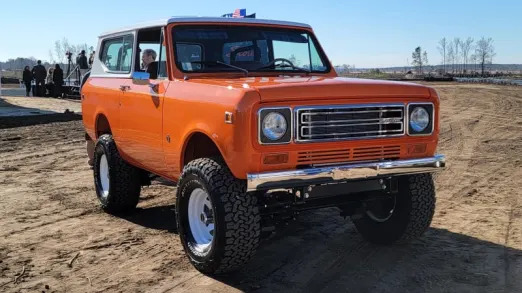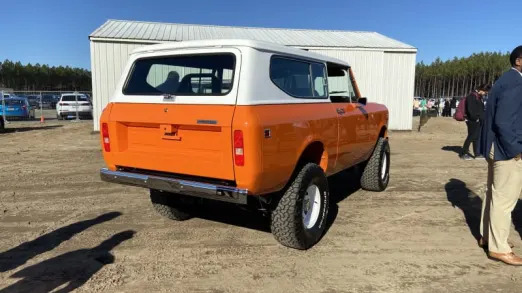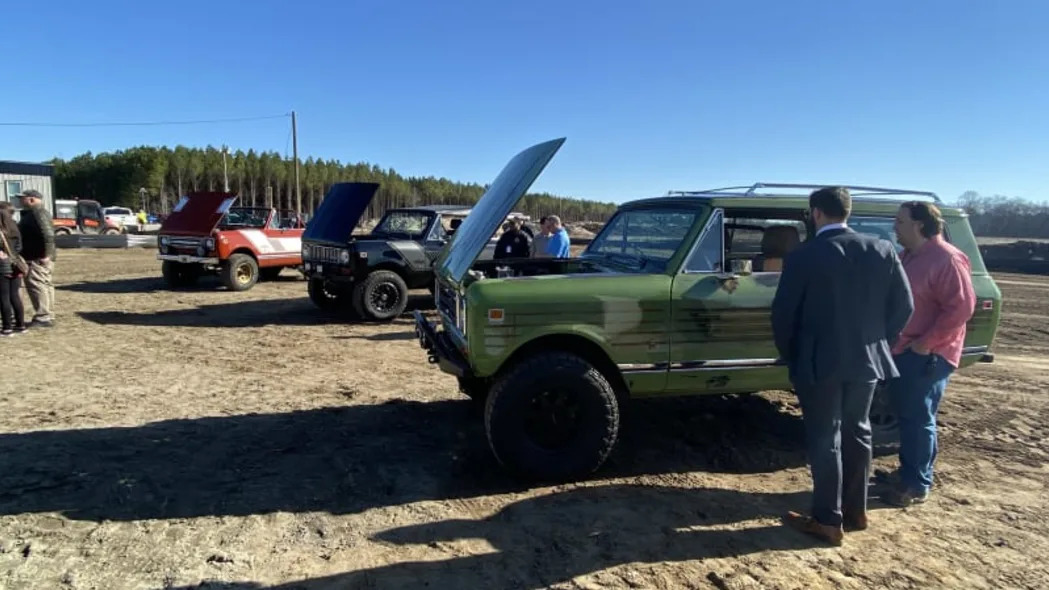Scout Motors and the little red house

BLYTHEWOOD, S.C. — The trope of the tech firm built in a ranch-house garage has become firmly established within American startup culture. And while Volkswagen operates on a scale that would confound even the most entrepreneurial Valley upstart, Scout is nonetheless fully embracing that attitude. Nowhere is that more obvious than at the site of its massive new Blythewood, South Carolina home, where over the course of the next 12 months, a state-of-the-art production facility will rise over a simple, mid-20th-century ranch lovingly referred to by its new multinational landlords as the little red house.
It’s an unremarkable thing — a 1,000-square-foot wood rectangle veneered with brick on a simple crawlspace foundation with a low-pitched roof. It could be one of any number of G.I. plan homes that went up during the boom that followed World War II. The land itself is equally mundane; one of two farmsteads that were combined to form the parcel that Scout now occupies. It was neither home to a Civil War campaign nor the site of early European settlement. Just another bed of ancient Atlantic sediment and eroded Appalachian ridgeline. But hundreds of miles from Scout’s offices in VW Group headquarters, the red house serves as a staging point for early planners — an anchor point, not just to the physical location, but to its history — and perhaps one the company needs to get its bearings.
Like this land, Scout is foreign to Volkswagen. Preserving this outwardly inconsequential piece of its history represents an acknowledgement of sorts that Scout is walking where others have already dared tread. This was obvious from the assembled collection of Scout trucks that were brought to the groundbreaking. Some belonged to loyal fans, some to Scout itself, and others the aftermarket companies that have kept the decades-old trucks on the road — or perhaps more appropriately, kept them running long after they’d wandered off of it entirely.


While the little red house has served as a staging area of sorts for visiting executives and dignitaries, its long-term purpose will be more ceremonial than functional. While the factory takes shape over the course of the next year, Scout’s team will be hundreds of miles away, working to bring its first two models to market, and that’s no easy task when you have what amounts to a retired brand and no products. An entire automotive identity is being re-forged and a new brand bible being built — quite literally, in fact. In its current form, it’s simply referred to as the Scout Encyclopedia, and to the extent that it can be true in today’s cloud-based world, Scout employees have a copy at every desk. Elsewhere in that office, I’m convinced, is a photoshopped image of a Volkswagen ID.4 on 35s with a giant red line drawn through it.
From nothing, we expect Scout to produce two body-on-frame models that can hang with the likes of a Jeep Wrangler, Ford Bronco, Land Rover Defender or Toyota Land Cruiser, and they’re to do that with only electric powertrains. There’s no ICE safety valve for this project. Scout has read all the same headlines you have, company CEO Scott Keogh assured us. There’s no about-face coming; if you think Volkswagen has some secret plan to re-introduce diesel to the U.S. market via a bad-ass new 4×4, you’ll find a more realistic storyline between two covers labeled “Harry Potter.”

It’s too early to call Scout the real deal; all we have so far is iron-red clay southern clay and a firm handshake. But that goes a long way in South Carolina; here’s hoping it pays dividends for enthusiasts. As for the little red house? It’s not going anywhere. It will remain on the Blythewood property as a reminder of what was here before — and what could be again, if Volkswagen misses the boat yet again on what has been a challenging market for the company to crack. This time, they’re doing it on American soil with an American nameplate. If they fail, well, the little red house will still be standing, ready to inspire the next round of eager go-getters intent on making their mark in this rich Carolina soil.







